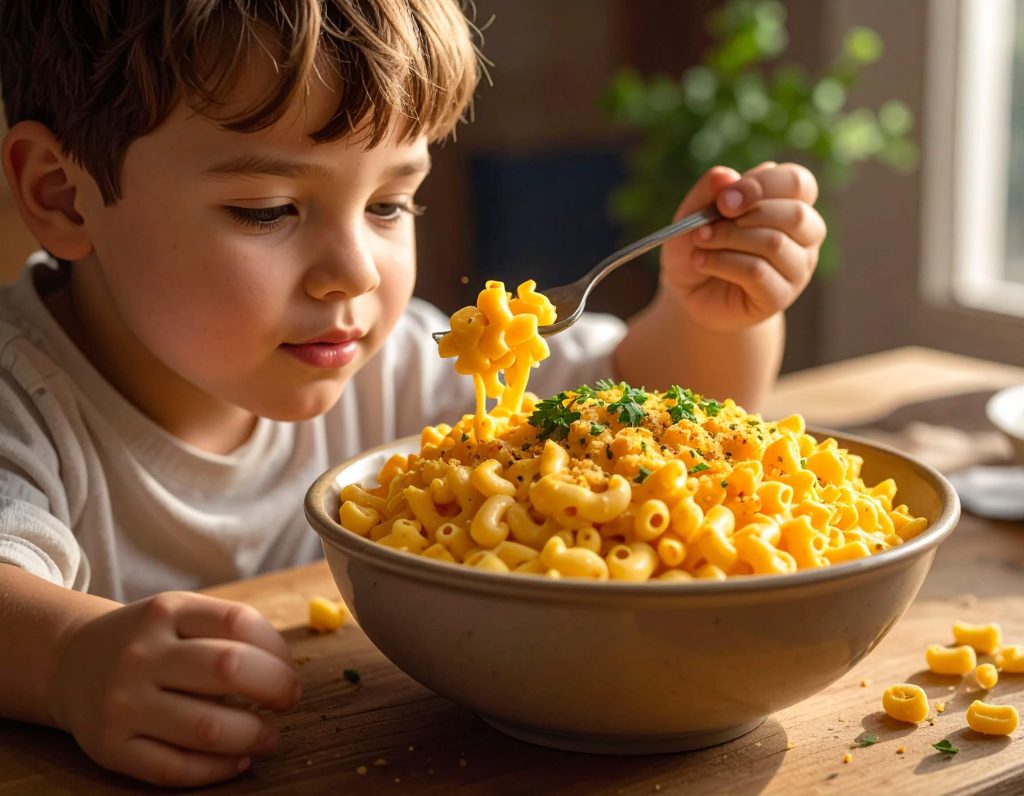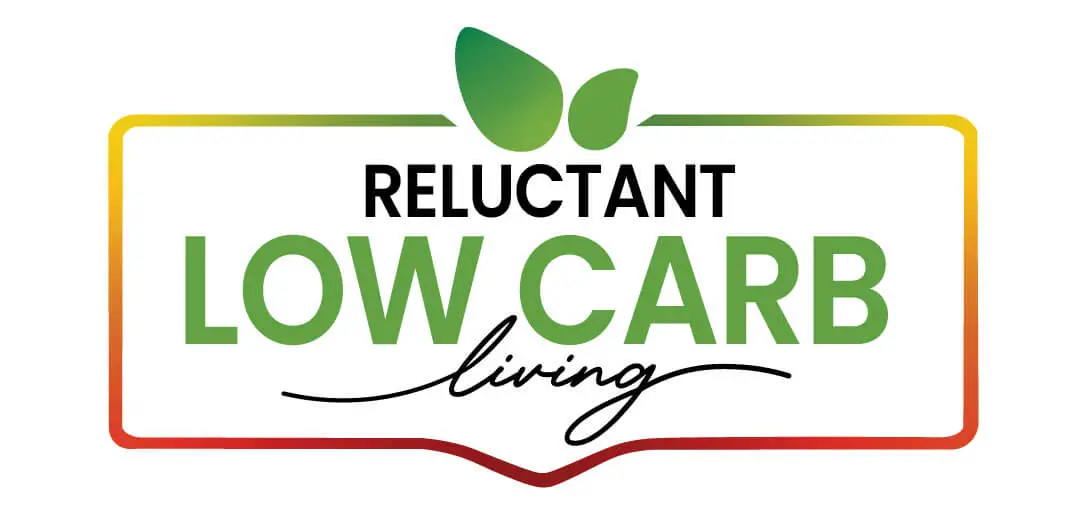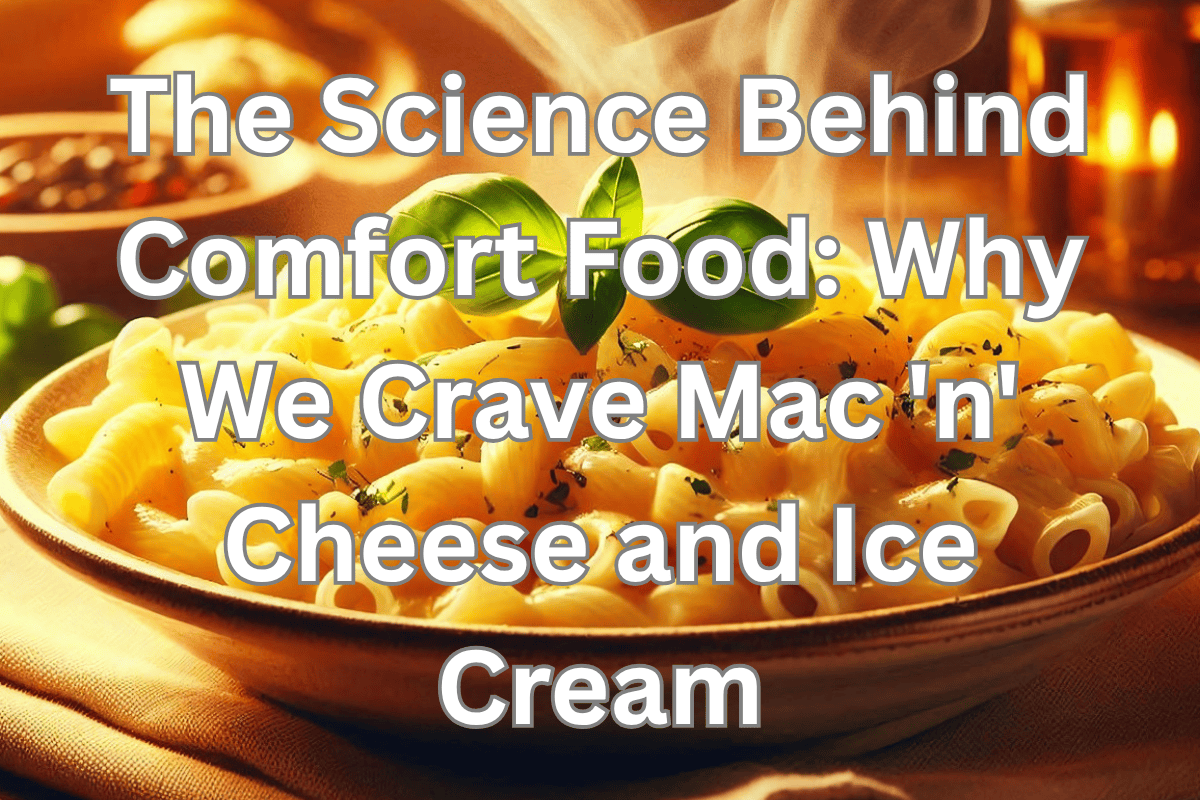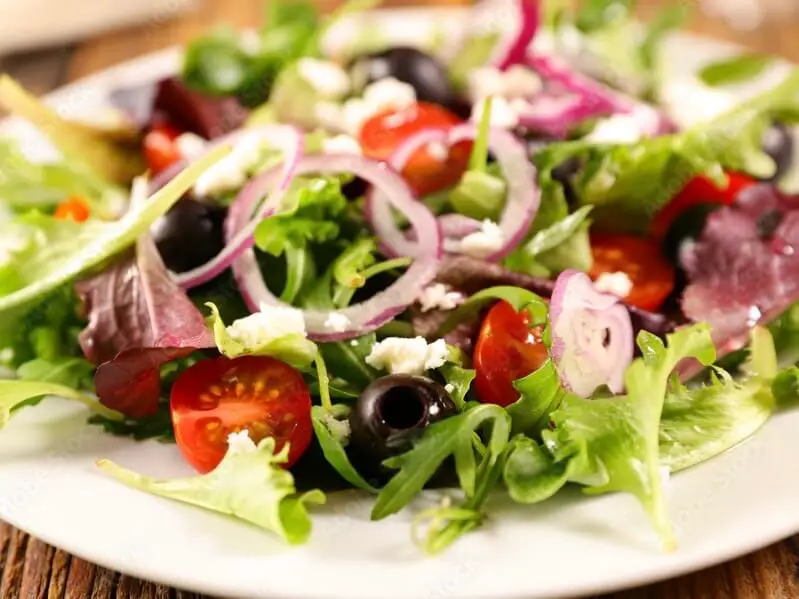Ever wonder why a bad day often ends with a craving for mac ‘n’ cheese or ice cream? It’s not just about taste; there’s a powerful science behind why we reach for certain foods when we’re stressed or sad.
Read on as we will explore the fascinating biological and psychological reasons your brain links comfort to your favorite treats. From childhood memories to the brain’s reward system, we’ll uncover the complex interplay of factors that drive our comfort food cravings.
Table of Contents
- The Nostalgia Nudge: Psychological Roots
- The Brain’s Reward System: Dopamine and Beyond
- Stress, Hormones, and Hunger
- The Cultural Comfort Compass
- Mindful Munching: Navigating Your Cravings
- Related Question
The Nostalgia Nudge: Psychological Roots

The Role of Childhood Memories
Comfort food is often tied to childhood experiences. Many of us have fond memories associated with specific dishes, whether it’s grandma’s homemade cookies or a family pizza night.
These foods become intertwined with our emotional experiences, creating a powerful connection. When we encounter stress or sadness, our brains instinctively seek out these nostalgic foods as a way to relive those positive memories.
I grew up in a home where food played a significant role, so I recognize that many of my food issues stem from childhood memories. There are certain foods that, at first, bring me comfort and satisfaction, but as I continue to eat them, I eventually realize what I’ve done, and that initial pleasure fades away.
Sensory Cues and Emotional Recall
The senses play a crucial role in triggering emotional recall. The smell of freshly baked cookies or the sight of a bubbling pot of mac ‘n’ cheese can evoke strong feelings of comfort and safety.
This phenomenon is known as sensory-specific satiety, where certain sensory cues can trigger cravings for specific dishes. When we experience these sensory cues, they can transport us back to simpler, happier times, reinforcing our desire for comfort food.
I truly believe in the power of sensory pulls. Sometimes, when I walk into a store or drive past a certain place that evokes good memories, I feel a strong urge to go in and eat. This pull can be incredibly powerful.

Conditioned Comfort
The concept of “conditioned comfort” explains how we learn to associate specific foods with positive emotional experiences. Over time, our brains create pathways that link certain foods to feelings of happiness and security.
For example, if you often received ice cream after a tough day as a child, your brain may come to associate ice cream with comfort. This conditioning can lead to a lifelong pattern of turning to specific foods during times of stress or sadness.
The Brain’s Reward System: Dopamine and Beyond
Activation of Pleasure Centers
When we indulge in high-fat, high-sugar foods, our brains release dopamine, a neurotransmitter associated with pleasure and reward. This release creates a sense of euphoria, reinforcing the behavior of seeking out these foods during difficult times.
The brain’s reward system is designed to encourage behaviors that promote survival, and since calorie-dense foods provide energy, our brains are wired to seek them out.
Evolutionary Advantage
From an evolutionary perspective, our cravings for calorie-dense foods have significant advantages. In ancient times, humans faced food scarcity, and high-calorie foods were crucial for survival.
Our ancestors who sought out and consumed these energy-rich foods were more likely to thrive and reproduce. This evolutionary wiring persists today, leading many of us to gravitate toward comfort foods when we need emotional support.
The Temporary “Feel-Good” Effect
While the immediate pleasure of comfort food can provide a temporary escape from stress, it can also lead to a cycle of emotional eating. The short-lived “feel-good” effect can quickly fade, leaving us feeling guilty or unsatisfied.
This cycle can create a reliance on comfort foods as a coping mechanism, leading to further emotional distress.

Stress, Hormones, and Hunger
The Connection Between Stress and Cravings
Chronic stress has profound effects on our bodies, including changes in hormone levels. Elevated cortisol, the stress hormone, can increase cravings for palatable foods, particularly those high in sugar and fat.
When we are stressed, our bodies signal for quick sources of energy, often leading us to reach for comfort foods.
Emotional Eating as a Coping Mechanism
Emotional eating is a common response to stress, sadness, or anxiety. Many people turn to food as a way to cope with negative emotions, using it as a tool for comfort and distraction.
This behavior can be traced back to our biological instincts; food provides a sense of security and stability during turbulent times.
The Role of Gut Hormones
Gut hormones, such as ghrelin and leptin, also play a significant role in our food choices. Ghrelin, known as the hunger hormone, increases appetite, while leptin signals satiety. Emotional states can influence the release of these hormones, leading to increased cravings for specific foods during times of stress.
Understanding this physiological basis can help us recognize the complexities of our cravings and emotional eating patterns.
The Cultural Comfort Compass
Diverse Comfort Foods Across Cultures
Comfort food is a universal phenomenon, with each culture having its unique dishes that provide solace. From Italian pasta to Indian curry, these foods often share a common purpose: to evoke feelings of warmth and security.
Exploring the diverse range of comfort foods across cultures reveals the shared human experience of seeking comfort through food.
Social Gatherings and Communal Eating
Social gatherings often center around food, reinforcing the emotional significance of comfort dishes. Sharing meals with loved ones creates a sense of belonging and connection, further enhancing the comforting effects of food.
The act of communal eating can amplify the positive emotions associated with specific dishes, making them even more desirable during times of stress.
The communal gathering aspect is one reason why family holidays, church parties, and other social events are so impactful, often leading us not just to eat, but to overeat. Thanksgiving and Christmas are great examples of this in the U.S., where many people, myself included, find themselves overeating simply because it’s a holiday.
Cultural Traditions and Family Recipes
Family recipes and cultural traditions imbue food with emotional significance. Many of us have cherished recipes passed down through generations, creating a sense of identity and belonging.
These dishes often serve as a bridge to our past, reminding us of family gatherings and shared experiences. When we reach for these comfort foods, we are not only seeking nourishment but also connecting with our heritage and the memories associated with it.
Mindful Munching: Navigating Your Cravings

Distinguishing Between Physical Hunger and Emotional Cravings
Recognizing the difference between physical hunger and emotional cravings is crucial for navigating our relationship with food. Mindful eating encourages us to pause and reflect on our cravings, helping us identify whether we are truly hungry or seeking comfort. By developing this awareness, we can make more intentional food choices.
Cultivating Healthier Coping Mechanisms
Instead of turning to comfort food as a primary coping mechanism, it’s essential to cultivate healthier alternatives. Engaging in physical activity, practicing mindfulness, or connecting with friends can provide emotional support without relying solely on food. Finding alternative ways to cope with stress can help break the cycle of emotional eating.
Embracing Comfort Food Mindfully
Comfort food doesn’t have to be off-limits. By embracing it mindfully, we can enjoy our favorite dishes without falling into a cycle of overconsumption. Allowing ourselves to savor the experience can enhance the pleasure associated with comfort foods, making them a more satisfying part of our lives without the negative emotional baggage.
The science behind comfort food cravings is a complex interplay of biology, psychology, and cultural influences. Understanding why we reach for certain foods during times of stress can empower us to make more informed choices about our eating habits.
By recognizing the emotional significance of comfort foods and developing healthier coping mechanisms, we can navigate our cravings with awareness and intention. So, the next time you find yourself craving mac ‘n’ cheese or ice cream, take a moment to reflect on the deeper reasons behind that desire.
Embrace the comfort food experience mindfully, and remember that it’s okay to indulge in the nostalgia and warmth that these dishes bring to our lives.
At Reluctant Low Carb Life, we are staunch advocates of the Health Trifecta: Fullness, Fitness, and Freshness. Additionally, we embrace the pillars of health, wellness, and graceful aging. Our mission is to provide honest and precise information to individuals dedicated to adopting a healthy lifestyle while enhancing their fitness and well-being.
We have a free monthly newsletter that is filled with information and helps you remain updated. Subscribe to the Reluctant Low Carb Life newsletter by clicking here.
Listen to our weekly podcast, Reluctant Low Carb Life, on all the major podcast platforms by clicking here.
Follow us on Instagram and Facebook by clicking those Social Media.
Related Question
Guide To Using Lavender Essential Oils
Lavender is a highly versatile essential oil used since ancient times. It is an essential oil that is shown to help with anxiety and reduces inflammation and infections. It is also an essential oil that smells good and can be soothing when used with a diffuser or in your bath water. We believe in adding Lavender essential oils to your healthy lifestyle and making the healthy choice for using them as they can have added health benefits.
You can read more about Guide To Using Lavender Essential Oils by clicking here.
Does Keto Weight Loss Come Back On?
Keto weight loss is becoming increasingly popular among people seeking to lose weight. Keto, or the ketogenic diet, is a high-fat, low-carbohydrate approach that forces your body to burn fat instead of carbohydrates for energy. Doing it correctly and consistently can result in rapid and long-lasting weight loss. But the question remains: Does keto weight loss come back on?
You can read more about Does Keto Weight Loss Come Back On? by clicking here.
What Are The Fattest Countries In The World?
The United States is the most obese country in the world for the total number of obese people in one country and is also in the top 20 for the highest percentage of obesity by population. If you compare the population percentages for the most obese, the Cook Islands gets first place. Even if we compare the United States’ obesity rate to many European countries, it is still very high. This clearly shows that the United States has an obesity problem.
You can read more about What Are The Fattest Countries In The World? by clicking here.







